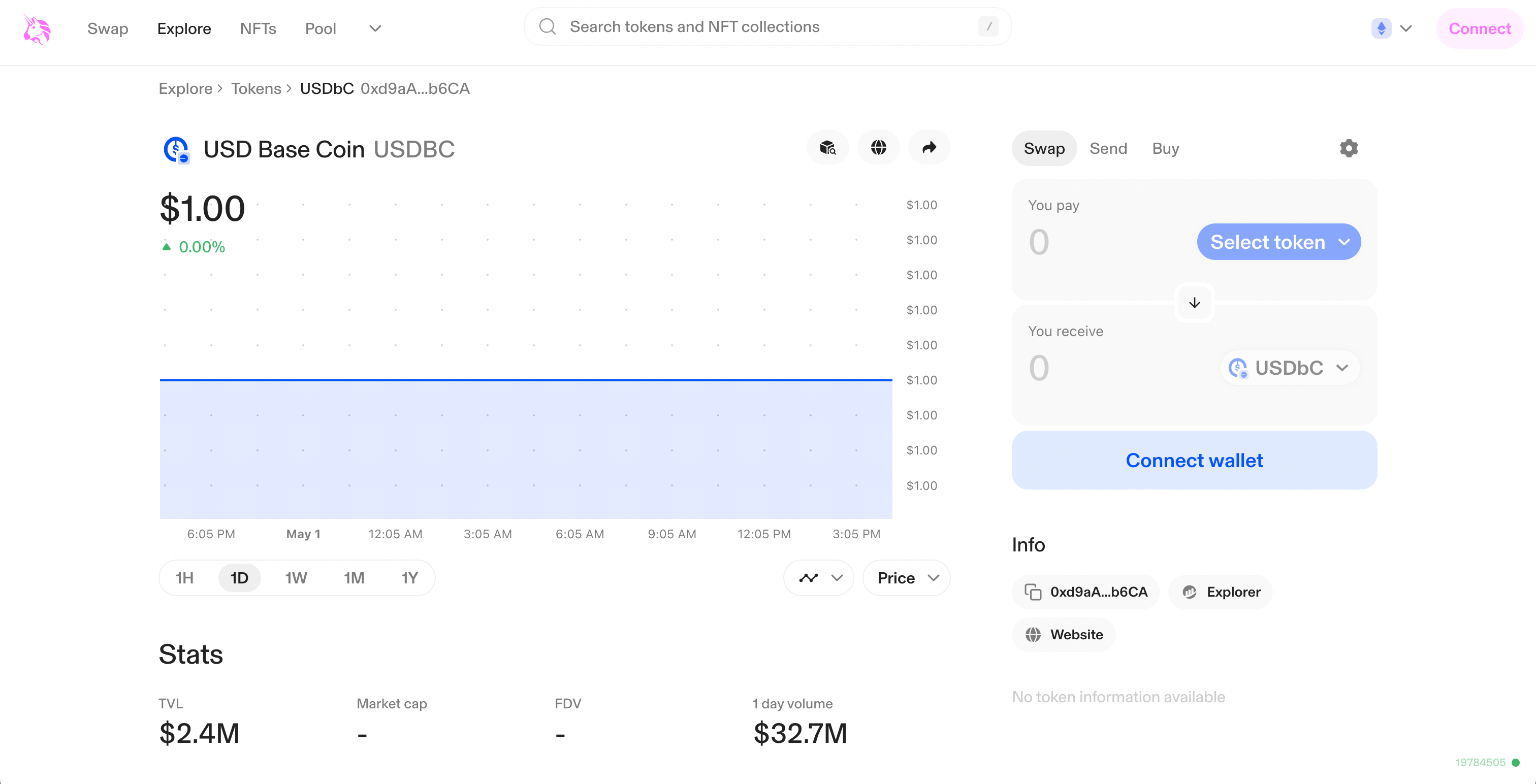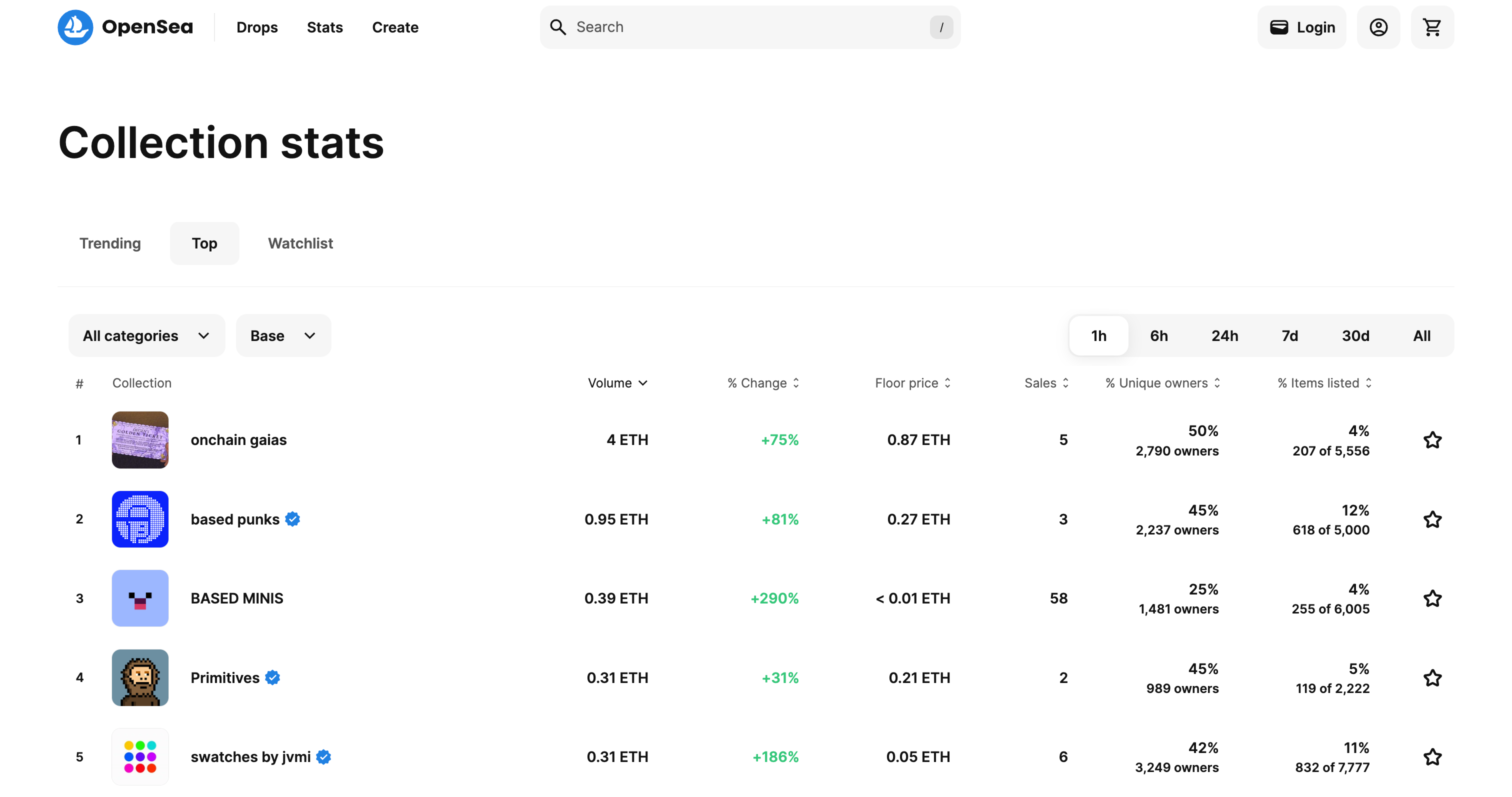Cryptocurrency and blockchain technology have changed the way we think about finance, data security, and decentralized applications (dApps). As these technologies evolve, scalability and efficiency become increasingly important factors.
This is where Base Chain, Coinbase's Layer-2 (L2) network, steps in. From DeFi apps to open-world gaming and loyalty programs, projects are building on Base to make it easier for their users to transact on Ethereum.
In this article, we'll explore what Base Chain is, how it works, its benefits, use cases, challenges, and more.
What is Base Chain?
Base Chain is an Ethereum Layer-2 blockchain network developed by Coinbase. It is designed to improve scalability, performance, and interoperability while reducing transaction costs and settlement time on the Ethereum network. As a decentralized platform, Base supports a wide range of dApps and smart contracts.

Base Chain emerged from Coinbase's attempt to create a more efficient and scalable blockchain ecosystem. It utilizes Optimism's OP Stack, a scalable and modular framework designed for Ethereum L2 networks. This foundation allows Base to integrate seamlessly with the Ethereum ecosystem while offering improved scalability and reduced gas fees.
Decentralized applications (dApps) and smart contracts
Base Chain serves as a platform for developing and deploying dApps and smart contracts. Its compatibility with Ethereum's toolsets, like Solidity and Truffle, makes it easy for developers to create and deploy decentralized apps and smart contracts. This flexibility encourages a wide range of use cases, from decentralized finance (DeFi) to gaming and non-fungible tokens (NFTs).
How does Base work?
Base Chain operates as a Layer-2 (L2) solution on top of Ethereum's Layer-1 (L1) blockchain. It uses a combination of on-chain and off-chain transaction processes to improve efficiency while aiming to maintain security.
Here's a deeper look at the key aspects of how Base works:
Transaction processing
Base's off-chain processing model works to significantly reduce costs and the load on Ethereum's mainnet. This is achieved through "rollups," where multiple transactions are bundled together into a single batch. This batch is then submitted to the L1 for validation, reducing the number of on-chain interactions while maintaining the security and immutability provided by Ethereum.
OP Stack
Specifically, Base utilizes an OP Stack modular framework via Optimistic Rollups. This is a rollup method where transactions are assumed to be valid ("optimistically") and are only challenged if an inconsistency or fraudulent activity is detected.

During this challenge window, validators can attempt to prevent incorrect transactions from being published on the mainnet. The OP Stack and optimistic approach minimize the need for on-chain validation, contributing to the scalability of the network.
Ethereum interoperability
Base Chain is designed to be fully interoperable with Ethereum. This allows for seamless interaction with Ethereum-based decentralized applications and smart contracts. Developers can leverage existing tools, like Solidity and Web3.js, to build and deploy applications on Base Chain.
Base security measures
Base is designed to provide a high level of security while offering scalability and lower transaction fees. Here's how it achieves this:
- Immutability: The Base Chain ledger is immutable, meaning once transactions are recorded and validated, they cannot be altered or tampered with. This is crucial for maintaining trust and ensuring the integrity of the blockchain.
- Rollup technology: The OP Stack and rollup mechanism used by Base Chain enhance underlying security by summarizing off-chain transactions and committing them to Ethereum's L1. This process benefits from Ethereum's Proof-of-Stake consensus mechanism, ensuring that the Layer-2 network inherits the security and immutability of the L1.
- Decentralization: Decentralization is a key aspect of blockchain security. The Base network of nodes and decentralized processing model ensure that no single entity has control over the network, reducing the risk of attacks and vulnerabilities.
Benefits of Base Chain
Base Chain offers several advantages over traditional Layer-1 networks and other Layer-2 scaling solutions. Here are a few of them:
Scalability
Base Chain's Layer-2 architecture and OP Stack allow it to handle a high volume of transactions, reducing congestion and improving efficiency. This scalability is crucial for supporting a growing and open ecosystem of dApps and smart contracts.
Performance improvements
With faster transaction times and lower fees, Base Chain offers significant performance improvements over Ethereum's mainnet. These benefits are especially valuable for DeFi applications that are home to high-transaction environments.
Reduced transaction fees
Base Chain's off-chain mechanism processes transactions with lower gas fees and faster confirmation times. Having nearly gasless transactions makes Base more accessible for developers and users, encouraging greater mass adoption and a more robust ecosystem overall.
Enhanced security and resilience
Base Chain leverages Ethereum's security features and Proof-of-Stake consensus mechanism, providing a high level of security and resilience. Ethereum validators, who maintain the blockchain's integrity, ensure the reliability of the rollup batches submitted by Base Chain.
Flexibility for developers and users
Base Chain's compatibility with Ethereum-based tools and frameworks allows developers to create and deploy dApps with ease. Users benefit from a seamless experience, with access to a wide range of applications and services.
Base Chain use cases
Base Chain's versatility enables a variety of use cases across many different industries. Let's examine some common applications built on Base:
DeFi platforms
Decentralized finance (DeFi) has emerged as a revolutionary force in the financial world, allowing users to access a wide range of financial services without relying on traditional intermediaries.

Base's Layer-2 platform provides a scalable and efficient environment for DeFi platforms and protocols, offering low fees, faster transactions, and enhanced interoperability. Base supports a wide range of DeFi applications, including lending and borrowing platforms, decentralized exchanges (DEXs), aggregator services, as well as yield farming, staking, and liquidity protocols.
Non-fungible tokens (NFTs)
NFT marketplaces and tokenization benefit from Base Chain's scalability and reduced fees. Artists, creators, and collectors can trade and tokenize assets with fewer barriers and costs.

Base has integrated with several NFT marketplaces like OpenSea to list NFTs minted on the Base network. Users can purchase Base NFTs directly with a card thanks to MoonPay's seamless Checkout integration. Just search for the Base NFT you wish to buy on OpenSea, and pay using MoonPay.
Tokenization
In addition to digital art and collectibles, Base Chain can be used to tokenize real-world assets, such as real estate or intellectual property. This capability opens new doors for innovation and provides potential new opportunities for businesses inside and out of the Web3 ecosystem.
Social media
Web3 represents a paradigm shift in how we view and interact with the internet. While Web2 allows users to read and write only, Web3 adds the benefit of ownership, emphasizing decentralization and user-driven content.

Base Chain is well-suited for supporting Web3 social media platforms, and currently hosts social applications like membership and loyalty rewards, community currency, cross-project communication, event management, and more. This decentralized structure gives users greater control over their content, data, and interactions, and provides a level of resistance to censorship not typically found on traditional platforms.
Supply chain and logistics
Base Chain's security and immutability make it a potential choice for supply chain and logistics applications. By leveraging blockchain technology, companies can track products and verify their origins, in an attempt to improve transparency and reduce fraud.
Base Chain's smart contract capabilities could serve to facilitate automation in supply chains, streamlining operations and reducing costs. Smart contracts automate processes like inventory management and order processing, lessening the need for manual work. This automation could help maintain optimal inventory levels, eliminate excess stock and minimize shortages.
Gaming and virtual worlds
Gaming and virtual worlds represent a rapidly growing sector in the blockchain industry, with millions of dollars in total value locked (TVL). Blockchain-based games and worlds require fast transaction times and low fees that gamers expect.

Through Base's scalability, fee structure, and transaction throughput, developers can create immersive gaming experiences and in-game economies. Gaming companies building on Base include traditional RPGs, MMORPGs, NFT-based games, strategy games, and more.
Other projects built on Base
In addition to the use cases mentioned above, a wide range of projects are building on Base Chain, from a variety of Web3 fields:

Many companies are already leveraging Base Chain's benefits to build or partner on the Ethereum Layer-2 platform. These include popular names in the world of Web3 like Aave, Brave, Chainlink, Compound, Etherscan, Exodus, Ledger, MoonPay, OpenSea, PancakeSwap, Rainbow, Sushiswap, Trust Wallet, Uniswap, and more.
Developer tools and resources
Developers working on Base Chain have access to a range of tools and resources, including Solidity, Truffle, and other Ethereum-based frameworks. This wealth of resources simplifies development and has the ability to encourage future innovation.
Limitations of Base
While Base Chain offers numerous benefits, it's not without challenges and limitations. Let's examine some potential hurdles that developers and users might face.
Technical complexity
Base Chain's technical complexity can present a learning curve for developers and users. Understanding Layer-2 architecture, smart contracts, and decentralized applications may require specialized knowledge and expertise before being able to interact with the Base platform.
Regulations and compliance
The regulatory landscape for blockchain and cryptocurrencies is evolving rapidly. Base Chain and its applications must navigate legal complexities and ensure compliance with relevant regulations. This can pose challenges for developers and businesses operating on the platform, especially for applications specializing in fields like DeFi, social media, and security.
Network security
Although Base Chain offers enhanced security, no network is immune to potential attack vectors. Developers and users must be vigilant and take security concerns seriously, while enacting appropriate measures to protect their assets and data.
To learn how you can help protect your digital assets, read our helpful guides: Crypto security basics, How to spot and avoid crypto scams, and 10 steps to a safer Web3 experience.
FAQs about Base
Here are some frequently asked questions about Base Chain to help clarify key concepts and address common queries.
Does Base have a native token?
No, Base Chain does not have a native network token associated with its Layer-2 blockchain.
Instead, it relies on Ethereum's native currency, Ether (ETH), for transaction fees and other network operations. This design ensures interoperability with Ethereum and other compatible networks.
Additionally, there are other Base tokens supported by and used within the Base ecosystem, including stablecoins like USD Base Coin (USDbC), a bridged version of USDC.
Who developed Base?
Base was developed by Coinbase, the centralized cryptocurrency exchange (CEX). Coinbase's aim with Base is to create a scalable, secure, and efficient Ethereum L2 blockchain network built on top of the Ethereum mainnet.
What is Base used for?
Base aims to be a platform for decentralized apps (dApps) and smart contracts with lower fees and faster transaction times than the main Ethereum network.
Buy BASE assets
Now that you know a bit more about Base, it's time to experience the Ethereum L2 platform for yourself.
MoonPay makes it easy to buy Base assets like ETH (Base) and USDC (Base) using a credit card, bank transfer, Apple Pay, Google Pay, and many other payment methods.
Just enter the amount of crypto you wish to purchase and follow the steps to complete your order.
MoonPay is also available for direct purchases in many Base ecosystem partners, such as Exodus, Ledger, PancakeSwap, Uniswap, Trust Wallet, and more.


.png?w=3840&q=90)
.png?w=3840&q=90)


.png?w=3840&q=90)